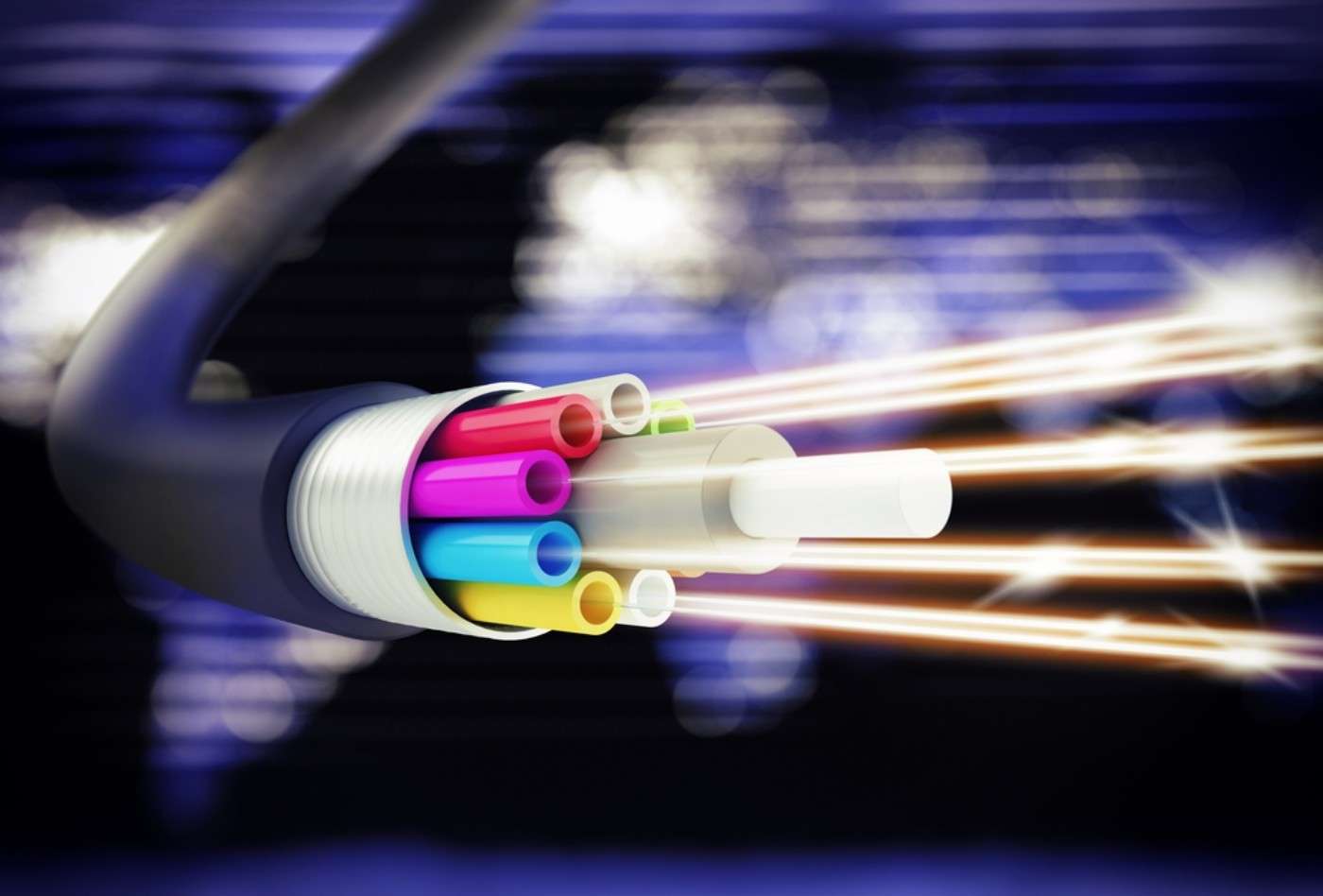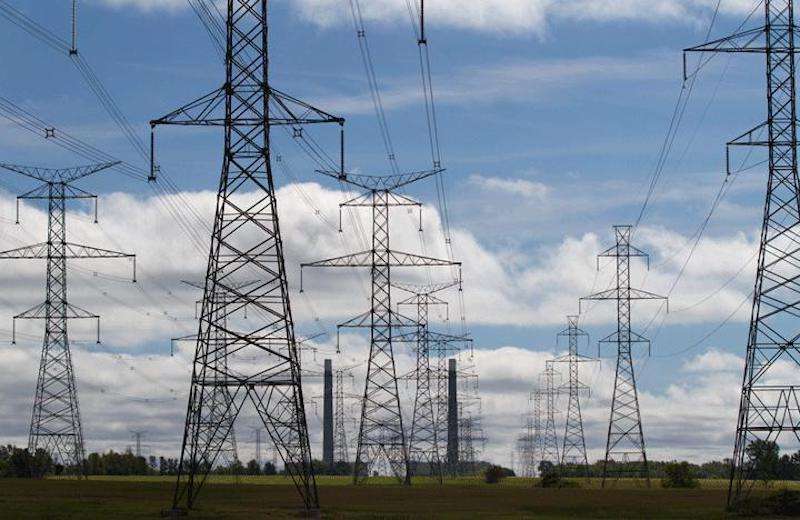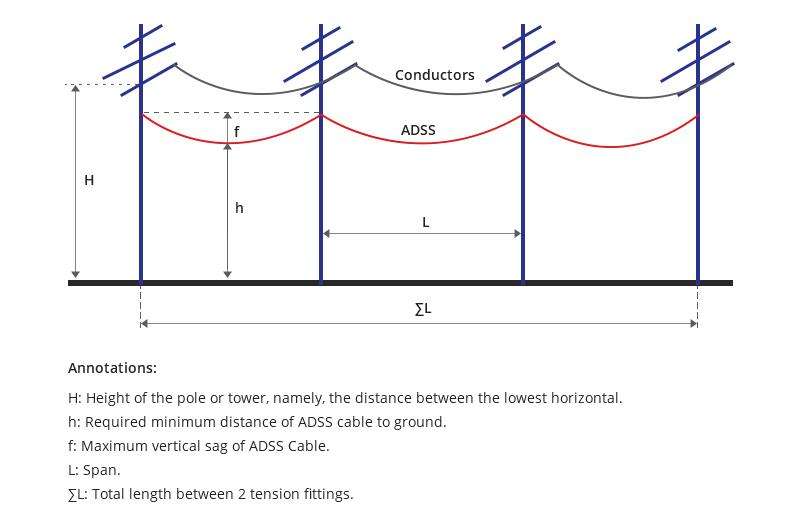
ADSS (All-dielectric Self-supporting) optical fibre cable is atype of self-supporting aerial fiber optic cable designed for aerial installation and deployment and is suitable for various outdoor applications. This thorough overview will cover the definition, structure, benefits, and applications of ADSS fiber cables.

Contents
What is an ADSS Fiber Optic Cable?
All-dielectric self-supporting optic cable is another name for ADSS fiber optic cable. There are two modes in optical fiber; single-mode and multimode fiber.
The self-supporting type indicates that the optic cable’s reinforcing member can withstand its weight and external load, has high mechanical strength, and can withstand the strong electric environment’s impact.
A comprehensive transmission circuit infrastructure with high-reliability performance is provided by the ADSS fiber optic cable system, which includes cables, suspension, dead-end, and termination enclosures.
What are the benefits of an ADSS cable?
In most cases, ADSS cable will provide an efficient and optimal solution for aerial cabling or outside plant (OSP) deployments.However, the most remarkable advantages of optical fibre are:
- Its dependability and low fiber cable price.
- A fiber optic cable is strong enough to allow installation lengths of up to 700 meters between support towers.
- ADSS cable is lightweight and small in diameter to reduce the load on tower structures caused by cable weight, wind, and ice.
- To maintain low optical loss throughout the cable’s life, the internal glass optical fibres are supported with no strain in the cable’s design.
- The cable is jacketed to protect the fibers from moisture.
- The jacket also shields the polymer strength elements from the effects of UV light from the sun.
- Circuits up to 100 km long are possible without repeaters using single-mode fibre cables and light wavelengths of 1310 or 1550 nanometers.
- A single cable can transport up to 144 fibers.
Structures of ADSS Cable
ADSS cable structures are classified into two types of optical fibre:
1. Central Tube Design
The fiber network in this design is placed in a PBT loose tube that is filled with water-blocking material. Then, depending on the desired tensile strength, they are wrapped in aramid yarn and extruded with a PE (110KV electric field strength) or AT (100KV electric field strength) sheath. Of the two fibre cable types, thisstructure has a small diameter and is light in weight, but it has limited lengths.

Central Tube Design
2. Stranded Structure Design
In a stranded structure design, the water-blocking grease and inner optical fibers are added to the loose fiber tube, and different loose tubes are coiled around the central reinforcement (usually FRP). The rest of the fiber optic wire is essentially the same as the central tube structure.
Between both fiber optic cable types, the lattercan produce a longer fibre length. Despite its large diameter and weight, an ADSS fiber optic cable with this structure is better suited for long-distance applications.

Stranded Structure Design
ADSS Cable Installation
ADSS fiber optic cable or types of OFC cable is a self-supporting fibre network cable that does not require any support when moving power from one location to another. These cables, while self-supporting, are typically installed on utility poles and power lines with the help of a fiber cable connector. Among ADSS fibre optic installation accessories are:
- Tension assemblies (clips),
- Optical distribution frames (ODFs)/optical termination boxes (OTBs),
- Suspension assemblies (clips),
- Outdoor junction boxes (closures),
- Optical termination boxes,
- any other
ADSS fibre anchoring clamps can be conveniently utilised during fiber optic cable installation as individual cable dead-end clamps at end poles or as an intermediate (double dead-end) clamp.
Applications of ADSS cables
ADSS cable was originally derived from military lightweight, rugged deployable (LRD) fiber wires. The advantages of fibre optic cable are many.
ADSS fibre optic cable is now used in aerial installations for short-span, typically on roadside power distribution poles, thanks to continuous improvements in technology such as fiber cable internet. Because it is non-metallic, the ADSS cable is ideal for applications near high-voltage power distribution lines, for which it has become a standard.
Circuits up to 100 km long are possible without repeaters using single-mode fibre and light wavelengths of 1310 nm or 1550 nm. ADSS OFC cable was typically used in 48 and 96 cores.

A typical ADSS fibre optic network cabling scenario.
Conclusion
ADSS fibre cables provide an optimal solution for a wider range of fiber counts and span lengths, therefore increasing the application of optic fibre in aerial cabling system designers in telecommunications, private network groups, etc.
STL retails high-quality ADSS fibre cables. Our ADSS cable is ideal for installation in distribution and transmission environments because it combines convenience and cost-effectiveness.












